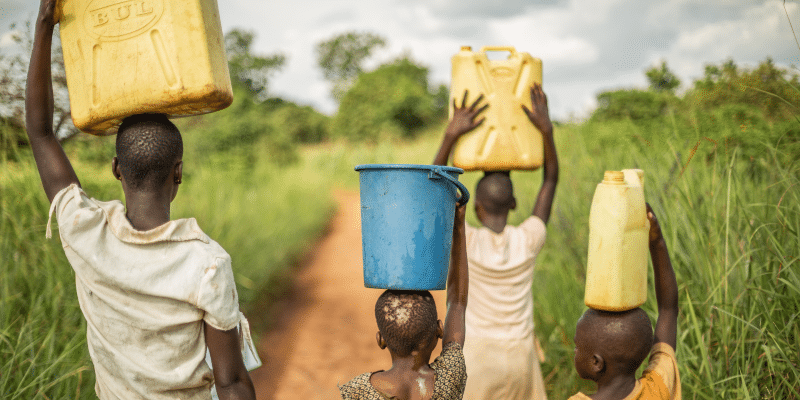Now that the COVID-19 pandemic seems to be directly affecting more people in growth economies, it’s clear that more people will be pushed into poverty. Earlier estimates from the World Bank suggested that between 88 and 115 million people would slide back into extreme poverty (people living on less than $2 a day). Those estimates have since been updated to between 119 and 124 million people but are likely to rise considering the end of the pandemic isn’t yet in sight for many in growth economies.
Before the pandemic, there were calls to increase aid to fight global poverty. In light of COVID’s impact on poverty, there have been more calls to provide more aid and help poor countries fight poverty. Bill Gates and Melinda French Gates, for instance, just increased the Gates Foundation endowment by $15 billion.
But as good as it is to increase funding to fight poverty, it is clear that anti-poverty programs are rarely successful at actually fighting poverty and creating economic independence. In the book, Moving Out of Poverty, the authors note that of the 60,000 people in 15 countries they interviewed about how they escaped poverty, fewer than 1% cited anti-poverty programs. Why do so many anti-poverty programs not work?
First, these programs are solving the wrong problem. The goal of anti-poverty programs shouldn’t simply be to fight poverty, but to create prosperity. In our research, we define prosperity as the process by which more and more people in society increase their economic, social, and political wellbeing. It turns out that every country that has successfully defeated poverty has done so by creating broad based prosperity for its citizens. Development scholar, Lant Pritchett, notes in a recent paper that “national development is an empirically necessary and sufficient condition for high levels of human wellbeing.” In other words, if you focus on creating national development (or prosperity), you will end up eradicating poverty. By focusing on eradicating poverty, as we have learned over the past several decades, we end up doing neither.
Second, most anti-poverty programs are too focused on solving a particular problem, like access to water, education, health, and so on. But poverty is multidimensional. Take the issue of access to clean water as an example. When an organization identifies that as a problem and seeks to solve it, the organization is ignoring all the other problems in the community. Having easier access to clean water surely has benefits, but billions of people in the world who have access to clean water as a result of an anti-poverty program are still living in poverty and struggling to make ends meet. Education is similar. Over the past several decades, there has been a big push to educate people across the globe. But solving an education problem in isolation doesn’t move the needle enough on poverty. It doesn’t mean these anti-poverty programs don’t have value. It simply means that by being too focused on solving one problem, organizations miss out on the big picture that poverty is a systems problem. And systems problems require systems solutions.
Third, and perhaps most unfortunate, is that most anti-poverty programs are unsustainable by design. This is largely unintentional but most don’t have the sustainability mechanism built into them. I experienced this when I started Poverty Stops Here, a nonprofit organization that built water wells in poor communities. There was no way for these wells to be maintained by people in the community where they were built. But the fact that the community needed water and building a well was the dominant way to provide water, Poverty Stops Here built wells. What Poverty Stops Here did, providing a solution without a mechanism for sustainability, is a microcosm of many anti-poverty programs. In fact, the International Institute for Environment and Development has estimated that more than 50,000 donated water points across Africa–the equivalent of $360 million in donations–were no longer functional.
Thankfully, there is a better way.
In Moving Out of Poverty, the authors note that 71% of people who escaped poverty assigned their progress to economic transformation such as jobs, new income sources, and new businesses. Such stark data provides insight as to what actually works in eradicating poverty. In our research, we have found that market-creating innovations are the critical missing piece in the economic development puzzle for growth economies.
Market-creating innovations transform complicated and expensive products into simple and affordable ones so many more people who previously lacked access, also known as nonconsumers, can buy them. Three things happen when market-creating innovations emerge. First, they create new jobs to make, market, distribute, and sell the products to the vast new market. Second, the organizations generate profits that are taxed by governments and used to help build infrastructure and develop institutions. Third, as other innovators join the new market and see firsthand the benefits of targeting nonconsumers, a culture of innovation and entrepreneurship ensues, creating a virtuous cycle that leads to more innovation. All this leads to the national development Pritchett has found to be empirically necessary and sufficient for high levels of human wellbeing.
Paradoxically, by focusing less on anti-poverty programs and more on market-creating innovations, development organizations can make poverty history.



